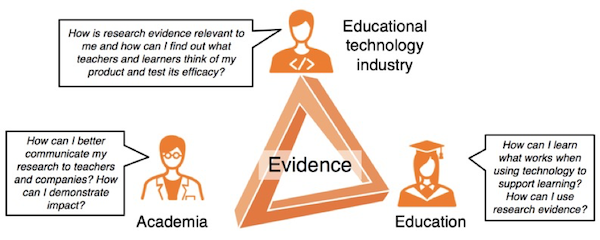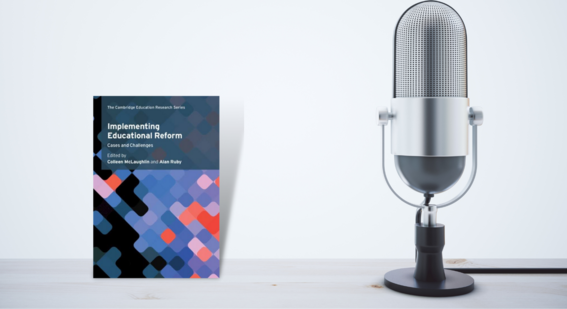How can technology play its most effective role in education reform?
As part of RewirEd Talks, Cambridge Partnership for Education Managing Director Jane Mann sat down with three education technology (EdTech) experts to explore how EdTech can be a part of reshaping education to address current challenges

Technology provides almost infinite possibilities to transform education – but how do we channel this huge potential into tangibly improved outcomes for people and communities around the world?
According to UNICEF, 94% of ministries of education developed policies to provide at least one form of digital or broadcast learning during Covid-19. That’s an explosion in use of EdTech, which was already growing quickly prior to the pandemic. However – UNICEF also estimates at least 31% of students couldn’t be reached by these efforts and researchers from Cambridge and RTI have calculated school closures may have wiped out a year of academic progress for disadvantaged children in the Global South. So – we can’t rely on sheer proliferation of technology alone to ensure quality education for all.

Here are 8 areas our panellists suggest thinking about to make EdTech most effective in education reform:
Evidence
Zubair Junjunia
Evidence that the technology works is critical. Whatever the tool, startup, software, it needs to be stress tested and rigorously assessed to understand how it can inform a maximal positive outcome. We need to be taking a much more scientific approach when it comes to deciding on which tools to choose and talking about social impact and accessibility.
Dr Anissa Moeini
It's all about evidence. In choosing the right tools, you need to know they actually educate. At EDUCATE, we use the Golden Triangle:

Unless the EdTech industry, Academia and Education are all engaged, it's not going to work. You can work as much as you want as a developer, and you can bring as many experts as you like, but if you don't work with the users of the technology and understand their contexts, you won’t achieve success. Tools like the Evidence-Informed Learning Technology Enterprise, can quickly value the impact potential of EdTech companies so procurers can see how much evidence there is in their business.
Partnerships
Basil Ayass
Technology alone cannot improve education. It can be a powerful part of the solution, but we need to come together with others to successfully address challenges. For example, at Google, we recently partnered with Cambridge Partnership for Education and the Ministry of Education of the Sultanate of Oman. After Covid-19 hit, we came together and used elements of design thinking and conducted multiple workshops with teachers to come up with some innovative ideas for using Cambridge content on Google Workspace. If it wasn't for the partnership between the content providers, the tech providers, the policy provider, and the users, then this project would not have been a success.
AI readiness
Dr Anissa Moeini
We need to become more data and technology savvy at the education reform level – both in terms of understanding the benefits and the risks of AI. Policymakers need to understand, manage and leverage data to make the best decisions about AI products and services to meet their goals. A big part of becoming AI-ready is understanding the ethical challenges involved, and we need to ensure the right training and guidance is provided to those working in education to understand those questions.
Capacity
Dr Anissa Moeini
The biggest challenge in implementing large scale technology projects in education reform is expertise and capacity. Teachers need to understand how to gain the most benefits from technology. EdTech works best when teachers are empowered to choose technology that comes with an evidence-based approach of how to implement it, and then they're given time and space to learn new skills, test new pedagogies and approaches to working, and use evidence to improve implementation each time.
Training
Basil Ayass
Often, we see training as an afterthought in an EdTech programme. If you flip that dynamic around and start with training and capacity building, your chances of success are exponentially increased.
Accessibility
Zubair Junjunia
We need to consider where technology is being implemented. We already have lots of tools that are quickly evolving and improving, but these may target only certain groups of users, and often the ones who are already provided for. We need to make sure that new technologies and tools are accessible to all people, including the smallest and most impoverished communities. Digital divides and internet accessibility are critical things we need to assess.
Representation
Zubair Junjunia
AI leverages large scales of data to inform decisions – we need to consider how we are making sure that data is representative and enabling democratic decisions. For example, when it comes to essay marking, are we making sure all user groups are represented?
Action
Basil Ayass
Prior to Covid, decision makers would often listen to the naysayers: “Oh, we don't have bandwidth” or “Oh, the students don't have devices” and allowed these challenges to stop projects early on. But, when Covid hit, there was no choice but to implement EdTech solutions, and it was surprising to see how quickly dynamics shifted and barriers were overcome. If you build a minimum viable product (MVP), roll it out, test, and iterate, you’ll see results faster than when you spend a long time planning. Evidence-based approaches are important – but we need to avoid getting stuck in paralysis by analysis.
Dr Anissa Moeini
It's really important to have a marriage of the information and the evidence with action. At EDUCATE, we're big proponents of a lean approach - releasing your products to start with your MVP, but then continuously collecting data and evidence of what's working.
Listen to the conversation:
The contributions above have been selected and summarised, please watch the full video for context. Thank you to Zubair, Basil and Anissa for their insights, we look forward to continuing the conversation.



